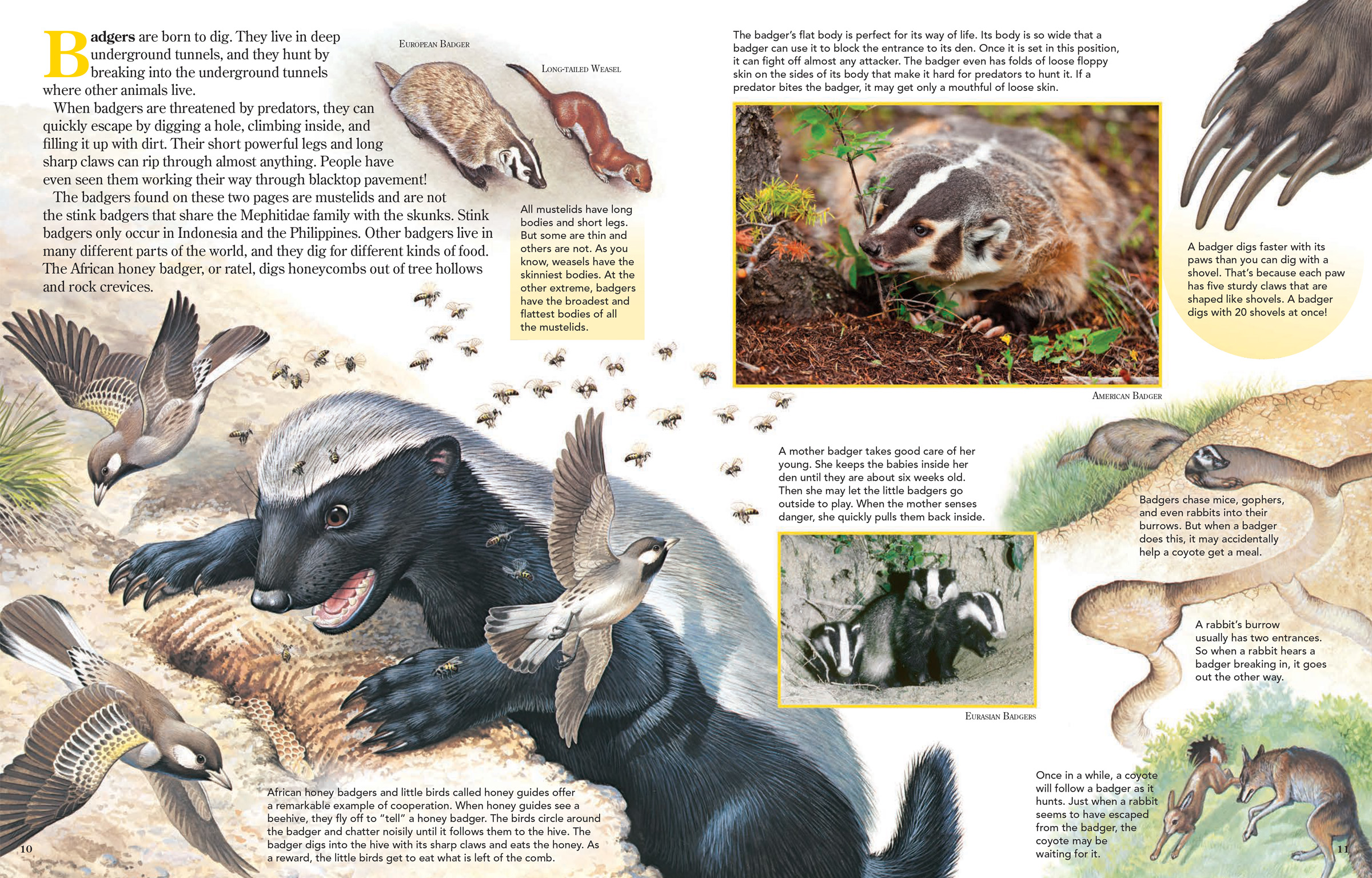
Badgers Are Born to Dig
ByBadgers are born to dig. They live in deep underground tunnels, and they hunt by breaking into the underground tunnels where other animals live.
When badgers are threatened by predators, they can quickly escape by digging a hole, climbing inside, and filling it up with dirt. Their short powerful legs and long sharp claws can rip through almost anything. People have even seen them working their way through blacktop pavement!
The badgers found on these two pages are mustelids and are not the stink badgers that share the Mephitidae family with the skunks. Stink badgers only occur in Indonesia and the Philippines. Other badgers live in many different parts of the world, and they dig for different kinds of food. The African honey badger, or ratel, digs honeycombs out of tree hollows and rock crevices.
All mustelids have long bodies and short legs. But some are thin and others are not. As you know, weasels have the skinniest bodies. At the other extreme, badgers have the broadest and flattest bodies of all the mustelids.
African honey badgers and little birds called honey guides offer a remarkable example of cooperation. When honey guides see a beehive, they fly off to “tell” a honey badger. The birds circle around the badger and chatter noisily until it follows them to the hive. The badger digs into the hive with its sharp claws and eats the honey. As a reward, the little birds get to eat what is left of the comb.
The badger’s flat body is perfect for its way of life. Its body is so wide that a badger can use it to block the entrance to its den. Once it is set in this position, it can fight off almost any attacker. The badger even has folds of loose floppy skin on the sides of its body that make it hard for predators to hunt it. If a predator bites the badger, it may get only a mouthful of loose skin.
A badger digs faster with its paws than you can dig with a shovel. That’s because each paw has five sturdy claws that are shaped like shovels. A badger digs with 20 shovels at once!
A mother badger takes good care of her young. She keeps the babies inside her den until they are about six weeks old. Then she may let the little badgers go outside to play. When the mother senses danger, she quickly pulls them back inside.
Badgers chase mice, gophers, and even rabbits into their burrows. But when a badger does this, it may accidentally help a coyote get a meal.
A rabbit’s burrow usually has two entrances. So when a rabbit hears a badger breaking in, it goes out the other way.
Once in a while, a coyote will follow a badger as it hunts. Just when a rabbit seems to have escaped from the badger, the coyote may be waiting for it.

